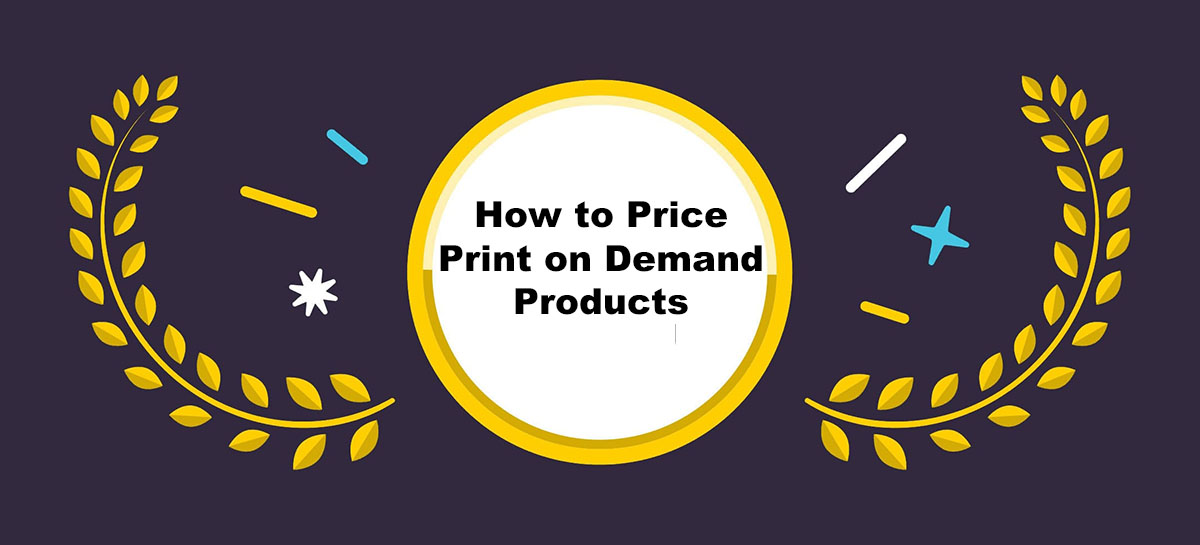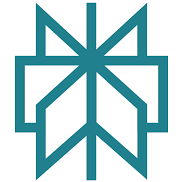One of the most common questions I hear from clients starting a print on demand (POD) business is: “How should I price my products?”
It’s a good question — and one that doesn’t have a one-size-fits-all answer. Pricing is a delicate balance between covering your costs, remaining competitive, and making a profit that supports long-term growth.
Set your prices too high, and customers will hesitate. Set them too low, and you could be working hard for little to no reward.
As someone who researches Print on Demand platforms, reviews pricing models, and helps entrepreneurs set up and scale their stores, I’ve seen firsthand what works — and what doesn’t.
In this guide, I’ll walk you through the same process I use with clients to find the right pricing strategy.
I’ll cover costs, competitor research, profit margins, marketing expenses, and proven tactics that make products more appealing without undermining profitability.
Key Takeaways
- Calculate your total costs — including production, shipping, fees, and marketing — before deciding on a price.
- Use competitor pricing as a guide, not as the sole factor in your decision.
- Aim for a profit margin of 20–40% to ensure long-term sustainability.
- Consider psychological pricing strategies such as charm pricing and bundling.
- Review your prices regularly and adjust them based on market trends and sales performance.
1. Start by Understanding All Your Costs
When I work with new print on demand sellers, the first step is always the same: we break down every single cost involved in getting a product from idea to the customer’s hands.
Many first-time sellers think only about the supplier’s base price, but that’s just one piece of the puzzle.
Base Product Cost
This is what your POD supplier charges for the blank product and the printing process. Costs vary depending on the product type, materials, and print method.
For example, a premium Bella+Canvas t-shirt will cost more than a basic Gildan, but it can also command a higher retail price.
Here’s a quick reference table based on typical supplier pricing:
| Product | Base Cost | Typical Retail Price |
|---|---|---|
| T-shirt | $9.00 | $20–$28 |
| Hoodie | $22.00 | $40–$55 |
| Coffee Mug | $7.50 | $15–$25 |
| Poster (12×18) | $8.00 | $18–$30 |
| Tote Bag | $12.00 | $20–$35 |
| Phone Case | $10.00 | $18–$30 |
These are averages I see across platforms like Printful, Printify, and Gelato — your actual costs will depend on the product variant and fulfillment location.
Shipping
Shipping is often underestimated in pricing discussions. If you offer “free” shipping, the cost is simply built into the retail price.
If you charge for it separately, your product price looks lower, but the customer’s total spend will be similar. Either way, you need to factor it in.
Example: If a hoodie’s base cost is $22 and domestic shipping is $5, your actual product cost is already $27 before fees.
Platform & Payment Processing Fees
Selling on Etsy, Amazon, or eBay means factoring in listing fees, transaction fees, and payment processing charges — typically 5–15% of the sale price.
Even on your own Shopify store, you’ll still pay credit card processing fees (around 2.9% + $0.30 per sale).
These percentages may sound small, but at scale, they can have a significant impact on profit.
2. Research the Market and Your Competitors
After we’ve nailed down costs, I always move clients into market research. The goal here isn’t to copy other sellers — it’s to understand the range of prices customers are already paying for similar products.
Where I Look
- Etsy — I filter search results by “Bestseller” to find proven products and price points.
- Amazon — I check the top sellers in the category for trends.
- Independent Stores — Using Google Shopping, I find Shopify and WooCommerce stores selling similar designs.
What to Compare
When assessing competitor prices, I look at:
- Print method (DTG, screen print, embroidery)
- Fabric or material quality
- Brand positioning (premium, budget, novelty)
- Niche appeal (broad market vs. very specific audience)
For example, if most “funny nurse” t-shirts in my research sell for $24.99–$29.99, I use that as a benchmark. It doesn’t mean that’s my final price, but it sets an informed starting range.
3. Establish a Target Profit Margin
A lot of new sellers pick prices without thinking about profit margins until it’s too late. I work backwards — we decide on a healthy margin first, then use that to calculate the retail price.
For POD, I recommend aiming for 20–40% net profit margins. Less than 20%, and it becomes challenging to invest in marketing, handle seasonal slowdowns, or absorb unexpected costs.
Example calculation:
- Base cost: $15
- Shipping: $4
- Fees: $2
- Ads: $5
Total cost = $26
To achieve a 30% margin:
$26 ÷ 0.70 = $37.14 → round to $37.99.
4. Factor in Marketing Costs
If you plan to run paid ads, Customer Acquisition Cost (CAC) has to be part of your pricing equation.
Many POD sellers spend $7–$15 in ad costs to make one sale — especially in competitive niches like apparel.
I’ve seen situations where a client had beautiful designs and strong sales volume, but once we added up ad spend, they were making less than $2 profit per sale. That’s not sustainable.
Organic channels like SEO and social media can reduce CAC, but they still require resources, whether that’s your own time or outsourcing content creation.
5. Use a Pricing Formula for Consistency
I give all my clients a simple formula to keep pricing decisions consistent:
javaCopyEditSelling Price = (Base Cost + Shipping + Fees + CAC) ÷ (1 - Target Margin)
Example for a hoodie:
($22 + $5 + $3 + $7) ÷ (1 – 0.35) = $53.07 → retail price: $53.99.
This formula ensures you’re always building in enough profit to grow.
6. Test and Refine Prices
Even with a formula, pricing isn’t “set it and forget it.” I encourage clients to test and adapt.
A typical test looks like this:
- Launch at the calculated price.
- Track conversion rates after 50–100 product page views.
- If conversions are low, try lowering by $2–$3.
- If sales are strong, test increasing slightly.
Small adjustments can create a significant change in both conversion rate and profit margin.
7. Leverage Psychological Pricing
I often advise on subtle tactics that make prices more attractive without lowering profitability:
- Charm pricing: $27.99 instead of $28.
- Price anchoring: showing a higher “compare at” price alongside your retail price.
- Bundling: offering two mugs for $35 instead of $20 each.
These methods can boost perceived value and encourage larger orders.
8. Adjust for Seasonality
Certain products and niches see predictable seasonal spikes — holiday gifts, graduation items, or Mother’s Day specials.
I’ve seen clients successfully raise prices slightly during peak demand periods. Conversely, slower months are a great time to run bundles or promotional offers to maintain momentum.
9. Review Prices Regularly
I recommend a quarterly review. Products that sell out quickly might be underpriced, while slow movers could benefit from price adjustments or improved listings.
Competitor activity, supplier cost changes, and shifts in consumer demand should all trigger a review.
10. Consider Niche Pricing Dynamics
Different niches have different price tolerances. In my consulting work, I’ve seen emotional or status-driven niches support higher prices, while novelty or meme-driven markets tend to be more price-sensitive.
| Niche | Avg. Retail Price (T-shirts) | Notes |
|---|---|---|
| Pet Lovers | $25–$30 | High emotional connection. |
| Fitness Apparel | $35–$50 | Customers expect premium quality. |
| Political Humor | $20–$28 | Price-sensitive audience. |
| Minimalist Luxury | $40–$60 | Brand image drives higher value. |
11. Real-World Case Studies
Etsy Mug Seller
Base: $7.50, shipping: $4. Started at $19.99, then increased to $24.99 after adding premium packaging. Sales volume remained steady, profit per unit increased by 25%.
Shopify Hoodie Brand
Base: $22, shipping: $5. Originally $39.99; raised to $49.99 after rebranding with lifestyle photography and influencer endorsements. Margins improved by 12% without losing customers.
Printify T-shirt Store
Base: $9, shipping: $4. Priced at $27.99 with free shipping. Conversion rate increased by 15% compared to charging $22.99 + $4 shipping.
Example Pricing Table
| Product | Base Cost | Shipping | Fees | Ads | Target Margin | Price |
|---|---|---|---|---|---|---|
| T-shirt | $9 | $4 | $2 | $5 | 30% | $28 |
| Hoodie | $22 | $5 | $3 | $7 | 35% | $53 |
| Mug | $7.50 | $4 | $1.50 | $5 | 30% | $27 |
| Tote Bag | $12 | $4 | $2 | $5 | 30% | $33 |
Final Thoughts
Pricing your POD products is as much about strategy as it is about math.
By understanding your costs, studying the market, setting a clear profit margin, and refining over time, you can create a pricing structure that attracts customers and supports sustainable growth.
It’s the same process I use with every client I work with — and it’s the one I’d recommend to anyone starting out in print on demand.






